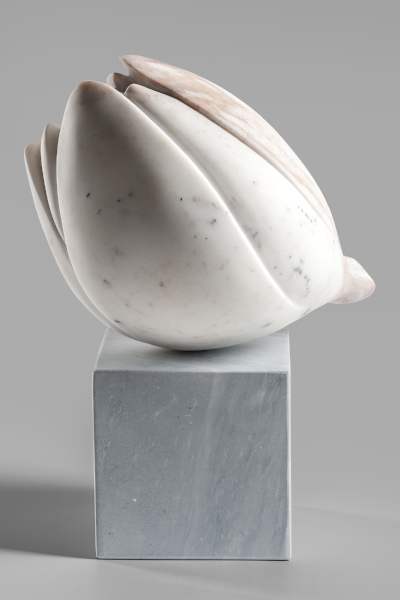
“Flora” is a named after the Roman Goddess of flowering plants. The attributes presented are fertility, blossoming, and feminine energy. Carved in Calcutta marble from Carrara, Italy, this stone is best know for it’s golden-to-peach colored crystals, and pieces of pyrite. Base is Grey Bardiglio.
Dimensions are: 15″ x 8″ x 13″ including the base.
Image courtesy of: Yoko Kubrick
Yoko Kubrick is inspired by Greek mythology and she likes to portray the love affairs and quarrels of the gods and goddesses in enormous marble sculptures. Since the fifth century B.C., statues of Zeus, Athena, and all of their counterparts have been immortalized in marble. Kubrick is a master at chiseling the fine details such as the sandaled feet, the robes they wear, and the size of their eyes.
Kubrick also draws inspiration from landscapes. The sculptor says, “My sculptures are the result of an intense reverence for nature, and a love of organic shapes that echo forms found in plants and water movement.”
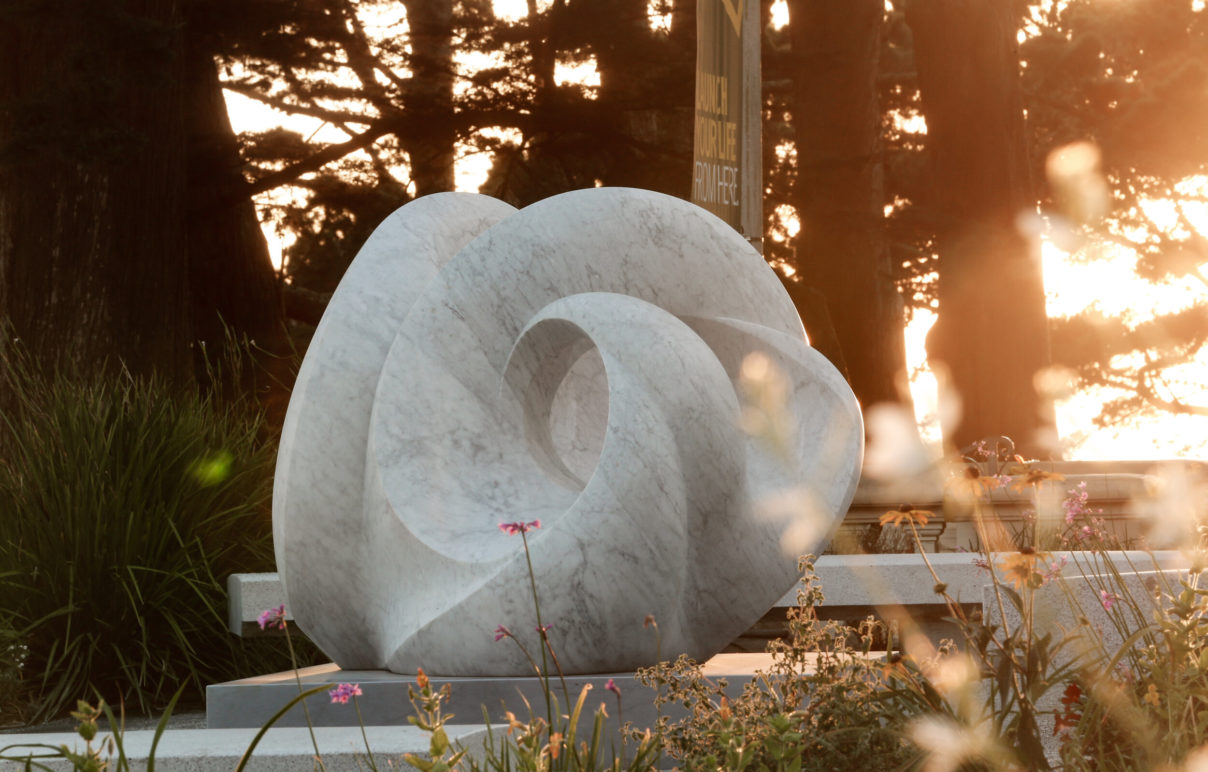
“Tides” at the University of San Francisco. Commissioned by the class of 1968 in honor of their 50th-graduation anniversary.
Image courtesy of: Yoko Kubrick
Kubrick was born in Guam to a Japanese mother and a Czech father. As a child, she spent time in both Honolulu and San Francisco. It was in San Francisco that Kubrick learned about the American sculptor Ruth Asawa; specifically, Asawa’s steel lotus fountains which were located in the middle of San Francisco’s Japantown in 1976. Kubrick was fascinated that the water features were made from metal, and further impressed that the sculptor was a Japanese woman.
She was determined to produce something similar and apprenticed for Albert Guilbara after college. The Northern California metal artist was happy to have Kubrick replicate his models in clay. Then, she would make molds and pour the wax that would be cast into bronze.
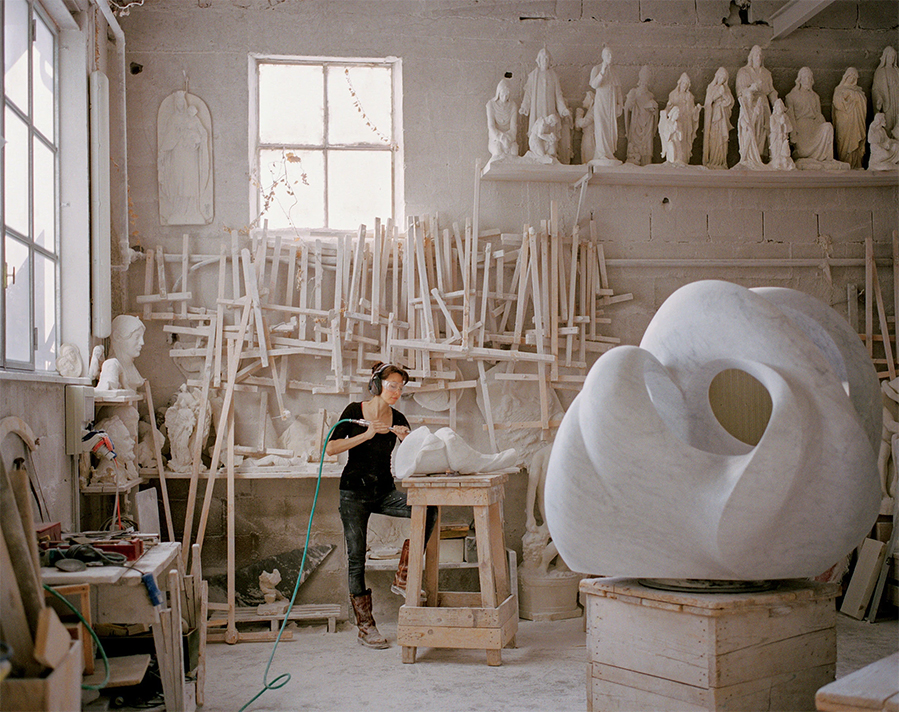
Kubrick sculpting at her workshop in Piertrasanta, Italy. At the right is “Tides”.
Image courtesy of: The New York Times, photographed by: Diego Mayon
In 2016, Kurbirk moved to Pietrasanta, the town of 25,00 near the Ligurian Sea in Tuscany. Pietrasanta is considered the “marble capital of the world”. Since the 16th-century, this area has been a mecca for sculptors from everywhere around the world. About the town, Kubrick says, “You go where everybody has the same passion as you.”
When she first arrived, Kubrick spent about six months in Italy where she lived a relatively monastic life. She would wake up before sunrise and walk to her sunlight-filled, dust-covered concrete-floored 4,300-square-foot workspace. This industrial studio space was founded by Massimo Galleni, the veteran marble sculptor who is world-renowned for his intricate commissions. Kubrick says that working alongside Galleni and his artisans was amazingly inspiring.
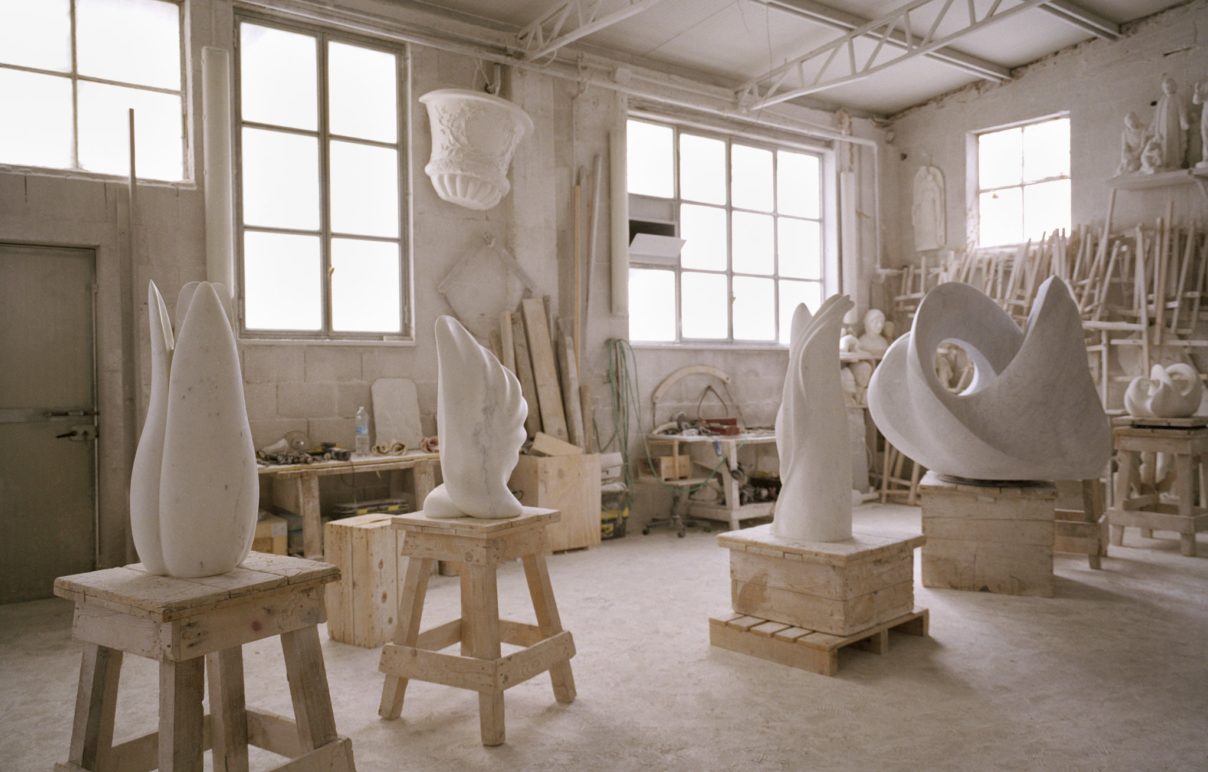
Sculptures at Kubrick’s studio.
Image courtesy of: The New York Times, photographed by: Diego Mayon
In the workshop, Kubrick is surrounded by figurative platter molds of subjects such as Christ on the Cross,Venus, and David which are sculpted by her studio-mates. This is interesting because her aesthetic is completely different; she explores forms found in nature such as plant life, water movement, and land formations. We especially love Kubrick’s energy and the undulations of water which are transferred to the stone.
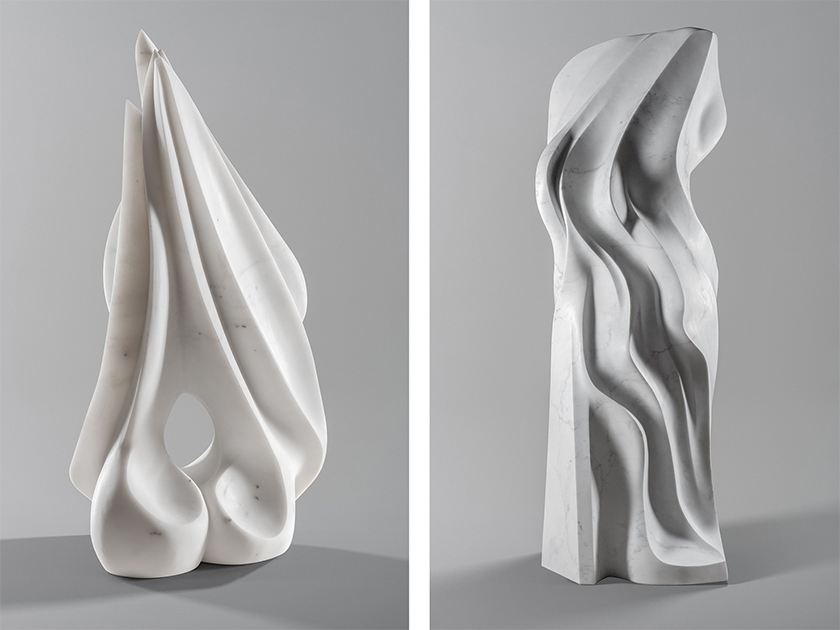
“Persephone” and “Lethe”.
Image courtesy of: Surface Magazine
Kubrick sources her marble pieces directly from the local dealers. As she begins the work, she uses an angle grinder with a spinning, razor-sharp blade to make incisions in the rock. Kubrick breaks away pieces with a hammer and chisel and then, she sands the stone. It is at this point in the involved process that the real magic occurs. We love the crisp lines that Kubrick is able to maintain throughout her marble sculptures. As evident from the finished pieces, the end-product is one of true beauty, finesse, and uniqueness!